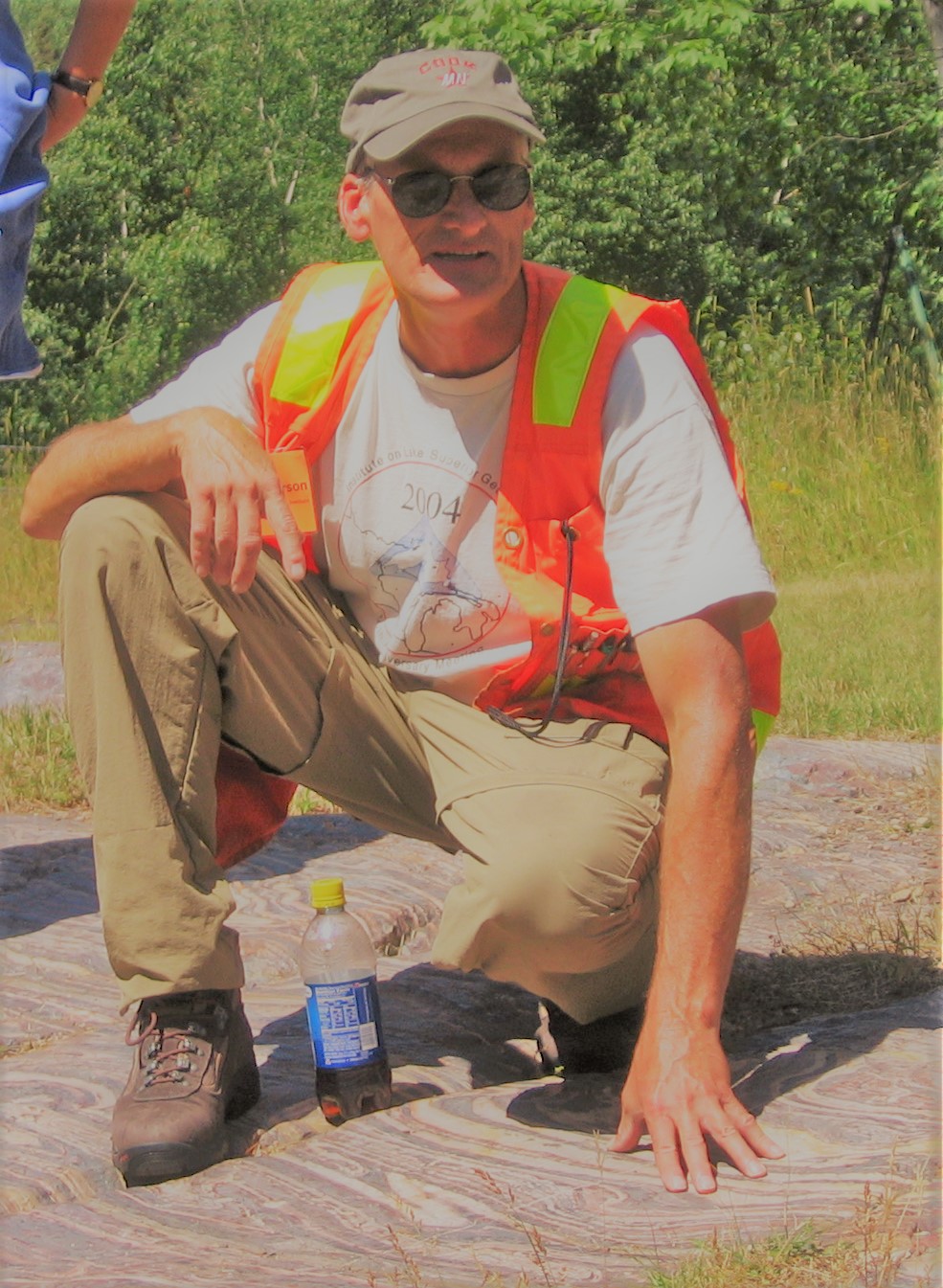CITATION
Mark Severson
2019 Goldich Medal Recipient

ILSG Members, Goldich Medal recipients and guests, it is my honor to present the citation for this year’s recipient of the Goldich Medal, Mark J. Severson.
Mark J. Severson has made significant contributions to understanding a vast number or topics associated with the geology of the Lake Superior region during his 30+ year career. Few can say they have contributed to the ILSG as a student, as an industry geologist, as an academic, as a thesis advisor, and as a teacher. In fact, Mark’s contributions to understanding Lake Superior Geology fill at least 15 pages of a Google Scholar search! He exemplifies the essence of an “Institute on Lake Superior Geology” geologist, possessing both exceptional field skills and extraordinary lab skills which have enabled him to conduct comprehensive, high quality scientific research. Mark also possesses the rare skills that allow him to communicate complicated geological features, models, and stories to professionals, students and the public in a way that teaches them (and even more importantly, gets them excited about) the amazing geology of the Lake Superior region and the countless geological wonders in their backyards.
Mark’s research in the Lake Superior region began in the mid-1970s after obtaining his Bachelor of Sciences degree in Geology at Western Illinois University. In 1978, he was awarded his Master’s Degree in Geology at the University of Minnesota Duluth, studying the “Petrology and Sedimentation of Early Precambrian Graywackes in the Eastern Vermilion District, Northeastern Minnesota” under the advisement of (at that time) future Goldich Medal awardee Dr. Richard Ojakangas. After stints as an exploration geologist searching for base metals, gold and uranium with US Steel and Santa Fe Pacific Mining, Mark started a distinguished 25-year long career with the Economic Geology Group at the Natural Resources Research Institute (NRRI) at the University of Minnesota Duluth (UMD). While at the NRRI, Mark established himself as one of the leading economic geologists in the Lake Superior region, producing nearly 40 NRRI technical reports, eight geologic maps, and numerous peer-reviewed journal and public poster presentations. The geologic topics covered in this work are diverse, and include:
• Performing a wide variety of research associated with the igneous stratigraphy, copper-nickel-platinum group element and titanium mineralization in the Duluth Complex (which included logging of over 1 million feet of Duluth Complex drill core and the production of 10 NRRI Technical Reports, 1 NRRI geologic map, and 11 peer reviewed journal publications):
• Completing substantial research evaluating sedimentary environments, mineralization, and the stratigraphy of the Biwabik Iron Formation, culminating in NRRI Technical Report NRRI/TR-2009/09, where he established the “Rosetta Stone” for interpreting the stratigraphy of the Biwabik Iron Formation;
• Writing numerous technical reports describing SEDEX-type mineralization in Carleton County and the Cuyuna District of eastern and east-central Minnesota, respectively;
• Producing an NRRI technical report describing the history of gold exploration in Minnesota;
• Completing an NRRI technical report explaining metallic exploration, mining, and processing permits in Minnesota;
• Co-authoring a significant NRRI technical report which describes rare earth element (REE) mineral potential across Minnesota;
• Developing technical reports describing clay deposits in the Minnesota River Valley;
• Producing the most detailed heat flow maps available for the State of Minnesota; and
• Co-authoring a federally-funded report describing possibilities for the development of pumped-hydro energy storage systems in legacy iron-mining landscapes in northeastern Minnesota;
During his time at the NRRI, Mark contributed to the education of undergraduate and graduate students, as well as teachers through his efforts as an Adjunct Professor in the Department of Geology at the University of Minnesota Duluth, as an instructor for the Precambrian Research Center geology field camp, and via the Minnesota Minerals Education Workshop.
Throughout his career, Mark collaborated on numerous projects with the Minnesota Geological Survey (MGS). This included co-authoring three Open File Reports (maps and reports) about Duluth Complex mineralization, as well as a significant Report of Investigation which describes the geology and mineral potential of the Duluth Complex and related rocks. It is important to note that these MGS publications were co-authored with Goldich Medal awardees John Green, Jim Miller, Mark Jirsa, and Val Chandler.
Since 2013, Mark has worked (and is now “semi-retired”) as a Senior Geologist for Teck American, where he continued to define Cu-Ni resources at the Mesaba Deposit in NE Minnesota. Despite his “semi-retired” status, Mark continues to make significant contributions to understanding Lake Superior geology in his role as Vice President for the Mesabi Range Geological Society.
Mark’s contributions to the ILSG since 1989 include authoring or co-authoring 22 abstracts and seven field trip guidebooks, serving as a session chair, and serving on student paper committees over the course of at least 20 ILSG meetings since 1989. It is worth noting that Mark served as the co-chair with Steve Hauck for the 50th Annual ILSG meeting that took place in Duluth in 2004. As well, Mark has undoubtedly increased the knowledge of those attending the many ILSG field trips that he participated in over the past 29 years.
All of us who have known and worked with Mark know of his passion for the geology. His significant contributions to understand and teach about the spectacular and diverse geology of the Lake Superior region, as well as his significant contributions to the Institute on Lake Superior Geology have all been accomplished with the highest level of professionalism and distinction. Please join me in congratulating Mark J. Severson as the 2019 recipient of the Goldich Medal from the Institute on Lake Superior Geology.
Submitted by George J. Hudak
Director, Minerals-Metallurgy-Mining Initiative
Natural Resources Research Institute, UMD